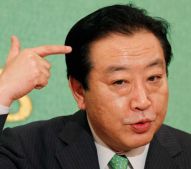A rather sensationalistic account by Huntington News: United States Circumvented Laws To Help Japan Accumulate Tons of Plutonium about Japan’s nuclear energy program has just come out that draws together many already known facts about Japan’s potential for dual-use capabilities that begins with the lede:

Japan's Troubled Rokkasho Reprocessing Plant
“The United States deliberately allowed Japan access to the United States’ most secret nuclear weapons facilities while it transferred tens of billions of dollars worth of American tax paid research that has allowed Japan to amass 70 tons of weapons grade plutonium since the 1980s, a National Security News Service investigation reveals. These activities repeatedly violated U.S. laws regarding controls of sensitive nuclear materials that could be diverted to weapons programs in Japan. The NSNS investigation found that the United States has known about a secret nuclear weapons program in Japan since the 1960s, according to CIA reports.”
If you want to cut to the chase about all this, please see this blog’s entry: The NHK’s “News” on Japan’s Not-So-Secret Nuclearization Plan 1968-70
But back to the “new-old news.”
The Huntington News report goes on to state:
“Highly sensitive technology on plutonium separation from the U.S. Department of Energy’s Savannah River Site and Hanford nuclear weapons complex, as well as tens of billions of dollars worth of breeder reactor research was turned over to Japan with almost no safeguards against proliferation. Japanese scientist and technicians were given access to both Hanford and Savannah River as part of the transfer process.”
This is quite common knowledge among nuclear researchers. Unfortunately the article then goes on to jump to ridiculous conclusions, suggesting that Japan has somehow how has a bomb program.
“While Japan has refrained from deploying nuclear weapons and remains under an umbrella of U.S. nuclear protection, NSNS has learned that the country has used its electrical utility companies as a cover to allow the country to amass enough nuclear weapons materials to build a nuclear arsenal larger than China, India and Pakistan combined.”
The article drops any pretense of balance by then stating:
“But there was also a secret component, an undeclared nuclear weapons program that would allow Japan to amass enough nuclear material and technology to become a major nuclear power on short notice.”
This is essentially sensationalism in the context of the article. It is no secret that Japan has the ability to manufacture nuclear weapons, if a political decision were taken to do so. But there is absolutely no creditable evidence of a secret bomb program
In fact, as the article states, Japan has had the ability to build nuclear weapons since the 1960s, and this is not a secret. In fact a major study at the end of the 1960s concluded that building an arsenal would be actually and obviously counterproductive to Japan’s security and tremendously destabilizing to Asia-Pacific security. Japan’s small size, its geographically concentrated industry, and the close proximity of potentially hostile powers all render the country vulnerable to a nuclear strike.
Such a decision to build nuclear weapons would only happen in extremis if Japan had clear and unequivocal evidence of abandonment from the U.S.-Japan Security Treaty.
The article does however, shed light on the transfer of sensitive U.S.-Japan Agreement that involved a a five-year period of cooperation between the U.S. and Japan on fast breeder reactor technologies, which involved access to and perhaps transferal of sophisticated plutonium separation hardware housed at U.S. Savannah River Site, which tested centrifuges, that were shipped to were shipped to Japan for use in Japan’s Recycle Energy Test Facility (RETF), that was to be used to reprocess plutonium produced in Monju and Joyo, Japan’s two fast breeder reactors.
The best summary of this situation can be taken from the Federation of American Scientist’s website, from which the following conclusions are taken
“Having renounced war, the possession of war potential, the right of belligerency, and the possession of nuclear weaponry, it held the view that it should possess only the minimum defense necessary to face external threats. The Japanese government values its close relations with the United States, and it remains dependent on the United States nuclear umbrella.
During the Sato cabinet in the 1960’s, it is reported that Japan secretly studied the development of nuclear weapons. On 17 June 1974, Japanese Prime Minister Tsutomu Hata told reporters that “it’s certainly the case that Japan has the capability to possess nuclear weapons but has not made them.” This remark aroused widespread concern in the international media at that time.
Japan’s nuclear power program based on reprocessed plutonium has aroused widespread suspicion that Japan is secretly planning to develop nuclear weapons. Japan’s nuclear technology and ambiguous nuclear inclinations have provided a considerable nuclear potential, becoming a “paranuclear state.” Japan would not have material or technological difficulties in making nuclear weapons. Japan has the raw materials, technology, and capital for developing nuclear weapons. Japan could possibly produce functional nuclear weapons in as little as a year’s time. On the strength of its nuclear industry, and its stockpile of weapons-useable plutonium, Japan in some respects considers itself, and is treated by others as, as a virtual nuclear weapons state.”










